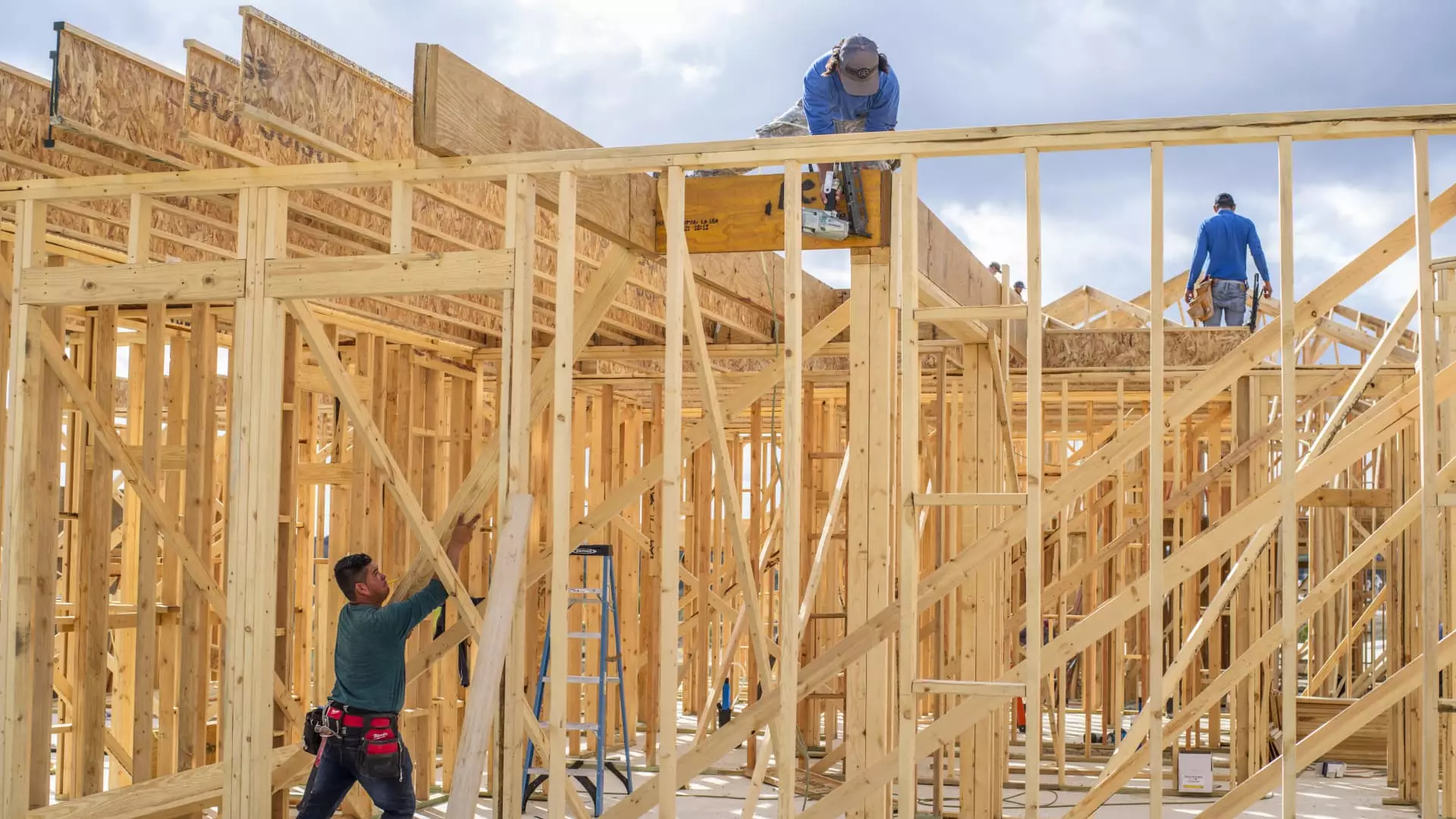In February, the sentiment of single-family homebuilders plummeted to its lowest point in five months, primarily driven by apprehensions surrounding tariffs. The National Association of Home Builders’ Housing Market Index (HMI) revealed a considerable 5-point decline since January, landing at a reading of 42. Notably, any figure below 50 reflects a pessimistic viewpoint among builders, signaling a significant downturn compared to the previous year’s index of 48. Carl Harris, the NAHB Chairman and an established homebuilder from Wichita, Kansas, encapsulated the sentiment by expressing builders’ reliance on potential pro-development policies, especially concerning regulatory reform. Nevertheless, he emphasized that uncertainty in policy direction, coupled with rising costs, compelled a recalibration of expectations for 2025.
A deeper analysis of the HMI’s three core components showcases an even bleaker outlook. Current sales conditions have seen a marked drop, declining by 4 points to a reading of 46. Furthermore, buyer traffic fell by 3 points, settling at a dismal 29. However, the most alarming factor was the 13-point plunge in sales expectations for the upcoming six months, which has now reached its lowest mark since December 2023. Collectively, these statistics denote a clear trend that builders are grappling with a softer market as they approach the critical spring selling season.
The context for this decline is stark. Builders are already grappling with elevated mortgage rates, with the average rate on a 30-year fixed mortgage surpassing 7% in January and February, a rise from the previous 6% range. Concurrently, home prices have escalated compared to last year, exacerbating the challenges of affordability for prospective buyers. The nettlesome combination of increased costs and decreased buyer traffic paint a daunting picture for the housing market.
Heightening the concerns are the tariffs proposed by the Trump administration on goods sourced from Canada and Mexico. While the imposition of these tariffs was postponed, builders remain vigilant about the expected surge in costs. Robert Dietz, the chief economist at NAHB, noted that a substantial percentage—32% of appliances and 30% of softwood lumber—are derived from international trade channels. This reliance creates an ecosystem ripe for cost increases, particularly in the face of tariffs, driving home the urgent need for builders to reconsider their pricing strategies.
Interestingly, sentiment among builders had been on an upward trajectory since last August, buoyed by hopes for lower mortgage rates and the potential for favorable pro-development policies. However, as data indicates, single-family housing starts are now lagging behind the figures recorded a year ago, despite a tight supply of existing homes on the market. The dip in builder sentiment could foreshadow an even tighter market closer to the spring season when housing demand typically escalates.
Signs of diminishing buyer demand have been noted in recent earnings reports from several homebuilding companies. For instance, Ryan Marshall, CEO of PulteGroup, revealed that even with the Federal Reserve’s efforts to reduce short-term interest rates, elevated mortgage rates, particularly through the last quarter, have stifled buyer enthusiasm and hindered affordability.
Interestingly, the tendency of builders to lower prices as a tactic to attract buyers has experienced a decrease. The share of builders actively reducing prices dropped to just 26% in February, a decline from 30% in January—the lowest percentage since May 2024. This trend suggests that traditional measures to incentivize buyers have lost efficacy. As high prices and interest rates continue to diminish the pool of viable buyers, the impact of sales incentives is waning. Builders find themselves at a crossroads; offering incentives might not swath many potential buyers, as those priced out are unlikely to be swayed by additional concessions.
The ongoing challenges faced by homebuilders signal a cautious landscape heading into the crucial spring selling season. With rising costs, high mortgage rates, and a dwindling buyer base, the industry stands at a troubling juncture. While sentiment appears subdued, there still remains a flicker of hope as builders aspire for regulatory reforms and favorable economic policies that could potentially revitalize the market. However, as the data reveals, the path forward is laden with uncertainties that will require adaptive strategies and resilient planning in the face of adversity.

